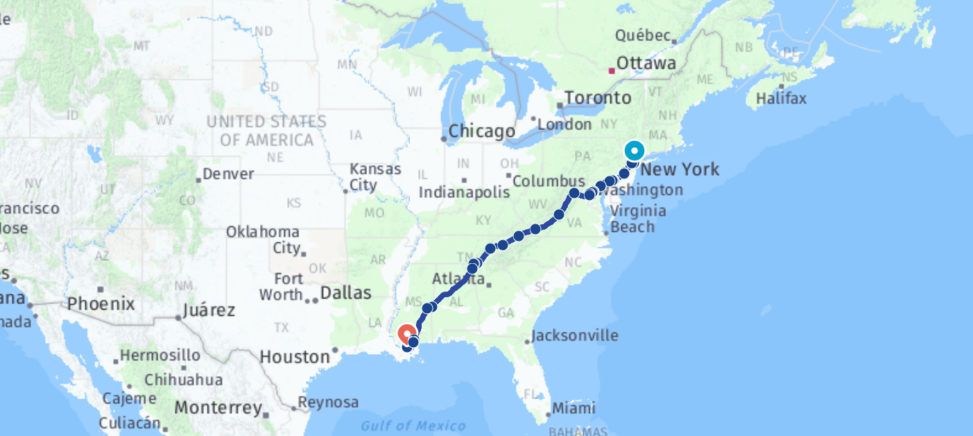In the early days of the internet, before smartphones became ubiquitous and GPS systems were embedded in every vehicle, getting from point A to point B was often a paper-bound affair. Enter MapQuest, one of the pioneering web-based mapping services that revolutionized how people navigated the world. While many now rely on apps like Google Maps or Apple Maps, MapQuest still maintains a loyal user base and continues to offer robust direction and mapping services. This article explores the evolution of mapquest directions, its current features, and its place in the modern world.
A Brief History of MapQuest
MapQuest was launched in 1996 by GeoSystems Global Corporation, based in Lancaster, Pennsylvania. It was one of the first mapping services available to the general public online. At a time when GPS devices were still relatively expensive and mobile internet was not widespread, MapQuest’s ability to provide turn-by-turn driving directions from any web browser was groundbreaking.
In 2000, MapQuest was acquired by AOL for approximately $1.1 billion, marking a major milestone in the company’s development. It quickly became a household name and the go-to solution for digital directions throughout the early 2000s.
MapQuest Directions Today
Despite intense competition from more modern platforms, MapQuest has not only survived but adapted. It still offers free access to route planning, live traffic updates, and interactive maps, making it a viable alternative for users who want a streamlined, ad-supported experience without being locked into a tech ecosystem like Google or Apple.
Key Features of MapQuest Directions
Turn-by-Turn Navigation
Users can enter a start and end location to receive step-by-step driving directions. These can be customized to avoid toll roads, highways, or ferries.
Multi-Stop Routing
A feature often used by delivery drivers and road trippers, MapQuest allows for multiple stops along a route and even reorders them for efficiency.
Live Traffic Data
MapQuest integrates real-time traffic information to help users avoid congestion, accidents, or road work.
Interactive Maps
Users can zoom, pan, and search for nearby services like gas stations, restaurants, and hotels directly on the map.
Mobile App
Available on both iOS and Android, the MapQuest mobile app includes voice-guided GPS navigation, offline map access, and location bookmarking.
Printable Directions
Though printing maps might seem old-school, this remains a valuable option for users who prefer physical copies or are traveling through areas with poor connectivity.
Comparing MapQuest to Modern Giants
While MapQuest may not have the seamless integration or AI-powered recommendations of Google Maps, it does have a few distinct advantages:
Privacy: MapQuest doesn’t track as aggressively as Google, making it a more privacy-conscious option.
Simplicity: Its user interface is less cluttered and more focused on getting from point A to point B.
Business Tools: MapQuest offers a suite of tools for small businesses and developers, including customizable maps and APIs.
That said, it lacks some modern conveniences like street view or detailed indoor maps.
Who Uses MapQuest Today?
While the bulk of casual users may have migrated to other platforms, MapQuest retains a loyal following among:
Long-haul drivers and delivery professionals
Travelers planning complex multi-stop road trips
Older users familiar with its interface
Businesses leveraging its mapping APIs
Additionally, those looking to print directions or maps for use in offline scenarios still find value in what MapQuest provides.
MapQuest’s Future in a Competitive Market
As navigation technology continues to evolve—with self-driving cars, augmented reality directions, and ever-deeper AI integration—MapQuest’s challenge will be to remain relevant. The company has been quietly updating its technology stack, refining its app experience, and strengthening its B2B offerings.
MapQuest has carved a niche not by competing head-to-head with giants like Google, but by serving users who want simple, straightforward mapping tools without added noise.
Conclusion
MapQuest may no longer be the dominant force in online navigation, but it remains a resilient and useful platform for millions. With its focus on ease of use, privacy, and multi-stop routing, MapQuest Directions continues to be a dependable tool in the world of digital mapping. Whether you’re planning a cross-country drive, avoiding traffic on your daily commute, or just looking for a restaurant nearby, MapQuest still has a map for that.

Provide Feedback